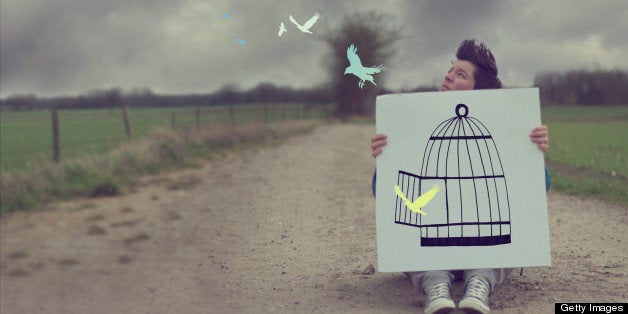
In his wildly popular 2006 TED talk, Sir Ken Robinson defined creativity as "the process of having original ideas that have value." Aside from being wonderfully succinct, this definition implies that any creative enterprise requires two key phases:
Phase 1: Coming up with an original idea
Phase 2: Taking a hard look at that original idea and assessing its value
So to be a successful creative, you need to not only a good generator, but also a good evaluator. The problem is that in practice, it's remarkably hard to be both. And the reason for that has everything to do with your "motivational focus" -- how you think about the goal you are pursuing when working on a creative project. One kind of focus heightens your creativity, while a different focus gives you the analytical tools you need to assess your work. The good news is that you can actually shift yourself from one focus to the other in order to bring your best game during each phase of the creative process.
When you see your goal as an opportunity to advance -- to gain something, or to end up better off -- you have what psychologists call a "promotion" focus. This focus has been shown to be highly conducive to creative insight. For instance in one study, when asked, "How many uses can you think of for a brick?" promotion-focused participants were more quickly able to go beyond the obvious (e.g., pave a sidewalk, use as a paperweight) to the clever and original (e.g., use it to commit burglary by breaking through windows, or to turn off your TV -- assuming you don't ever want to turn it on again). This is the focus you want when you heading into a job interview, or brainstorming options for a new ad campaign.
Promotion focus causes you to have a more exploratory information-processing style and greater comfort with risk, which facilitate creativity. The promotion-focused worry less about every idea being perfect or even feasible, so they are open to more possibilities. Unfortunately, the downside of promotion focus is that while it may be great for creative idea generation, research suggests that it's not well-suited to creative idea evaluation. So there is another kind of focus you should adopt to get that particular job done.
When you see your goals as opportunities not to gain, but to avoid danger and keep things running smoothly, you have what's called a "prevention" focus. This focus makes you more analytical, more cautious, and more sensitive to potential flaws or weaknesses in an idea. Prevention focus is unlikely to lead you to creative insight -- in fact, it is likely to block creative insight from happening in the first place. You definitely don't want to be prevention-focused when you are trying to generate ideas. But switching to a prevention focus after you've come up with some options will help you to more easily tell a workable idea from one that will never get off the ground.
In my new book Focus, I describe many techniques for shifting from one focus to the other -- but here's one that works brilliantly:
Phase 1: Creative Idea Generation
Get your Promotion Hat on by taking a few moments to think about what you will gain from successfully completing your project. What good things will happen? What are the rewards? How will you be better off? It can help to actually write a short paragraph to really get into focus and, as Charlie Sheen might say, access the right set of mind tools. The next thing you know, you'll be feverishly scribbling all your awesome new ideas onto cocktail napkins.
Phase 2: Creative Idea Evaluation
Now it's time to take a breath and put your Prevention Hat on. To do this, think about what you will lose if you don't successfully complete your project -- what will the negative consequences be? How will you be worse off if you fail? (I know -- this doesn't sound fun. I never said prevention focus was fun. But it is really effective.)
Looking again at your cocktail napkins with your prevention focus, you'll be able to see much more clearly which ideas probably won't work, which ones can't possibly work, and which ones appear to be mustard stains. The ones that still seem promising, even while wearing a Prevention Hat, are probably gold.
This post originally appeared on 99u.com
Are you promotion or prevention-focused? Find out by taking the free online test.
For more science-based strategies you can use to reach your goals and get happier and healthier, check out Succeed: How We Can Reach Our Goals and Nine Things Successful People Do Differently.
Trying to figure out where you go wrong when it comes to reaching your goals? Check out the free Nine Things Diagnostics.
For more by Heidi Grant Halvorson, Ph.D., click here.
For more on success and motivation, click here.